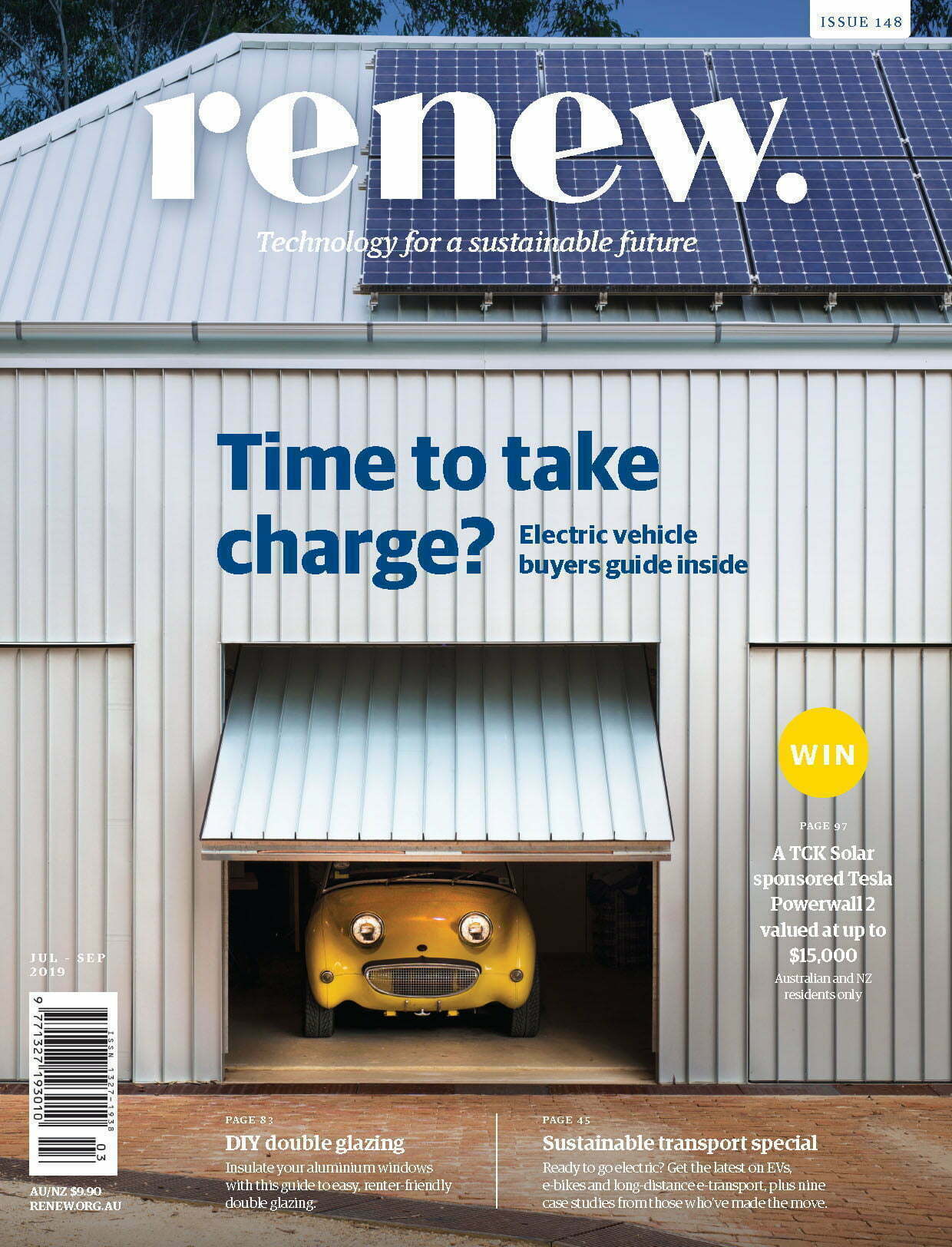Built with solar, runs on solar
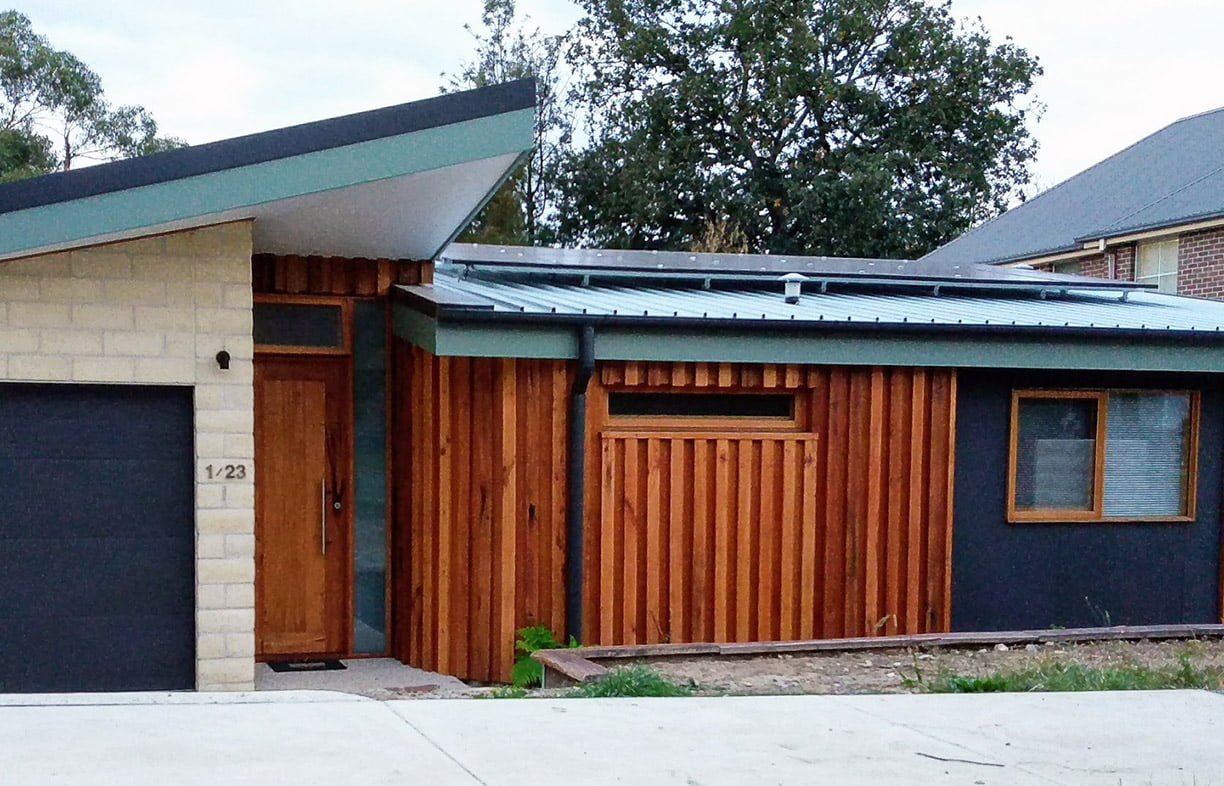
Designing and building a more sustainable home is fertile ground for innovative ideas. Howard and Libby Elston explain how generators were largely avoided when building three new units.
What happens when everyone is ready to start a sustainable building project, but there’s a delay in getting a temporary connection to the electricity grid? For this suburban project, the solution was to try a bold experiment with a solar-powered off-grid worksite.
Electrical supply delay posed a problem
Removing the power pole from the footpath at the front of the Ringwood East property was a significant advantage for site access and future street appeal. However, the catch was the distributor couldn’t say for certain when the new underground cable would be connected to the grid.
Construction was ready to begin on the first of three units in our sustainable development which we’ve called Green Home Build Australia (greenhomebuildaustralia.com). Being unable to organise temporary power threatened to delay the start of the project.
So our builder David Coates from Sustainable Building and Design began to investigate alternative power supplies.
The obvious solution of using a petrol-powered generator didn’t fit with the project’s sustainability philosophy. Apart from burning fossil fuel, it didn’t seem fair to the neighbours to have a generator chugging away all day.
David realised that a power system designed to be installed at the end of the project could provide a solution with a lower carbon footprint. We had planned to power unit 3’s garden shed by an off-grid system to avoid installing a lengthy electrical conduit run to the back of the property.
Could the off-grid system be installed at the start of the project and meet the power demand of a construction site? David discussed the concept with Gary Wilson from Sustainable Power Systems, the designer of the site’s electrical systems. The design brief was to provide a reliable electrical supply for a building crew using a variety of power tools.
The off-grid theory
Gary concluded that, in theory, the shed’s off-grid system could be modified to suit the new purpose. Selecting components which met the site demand without blowing the limited budget was the tricky part. The two largest energy users would be the air compressor (1.8 kW) and drop saw (1.65 kW). Other tools included circular saws, grinders and a cordless tool battery charging station.
Choosing the panels was an easy place to start. The number of panels was limited to four, as that is the most that would fit on the garden shed roof. Gary chose 335 W Canadian Solar panels giving a total production of 1.34 kW. On a sunny day, the panels would produce most of the electricity required for continuous operation of one of the big energy-using tools.
An Outback Power FXR2024E inverter–charger is the heart of the design. Inverter sizing was a compromise between meeting site power demands and cost. The 2 kW inverter could certainly supply one large user (such as the 1.65 kW drop saw), along with smaller users (such as the cordless battery charger).
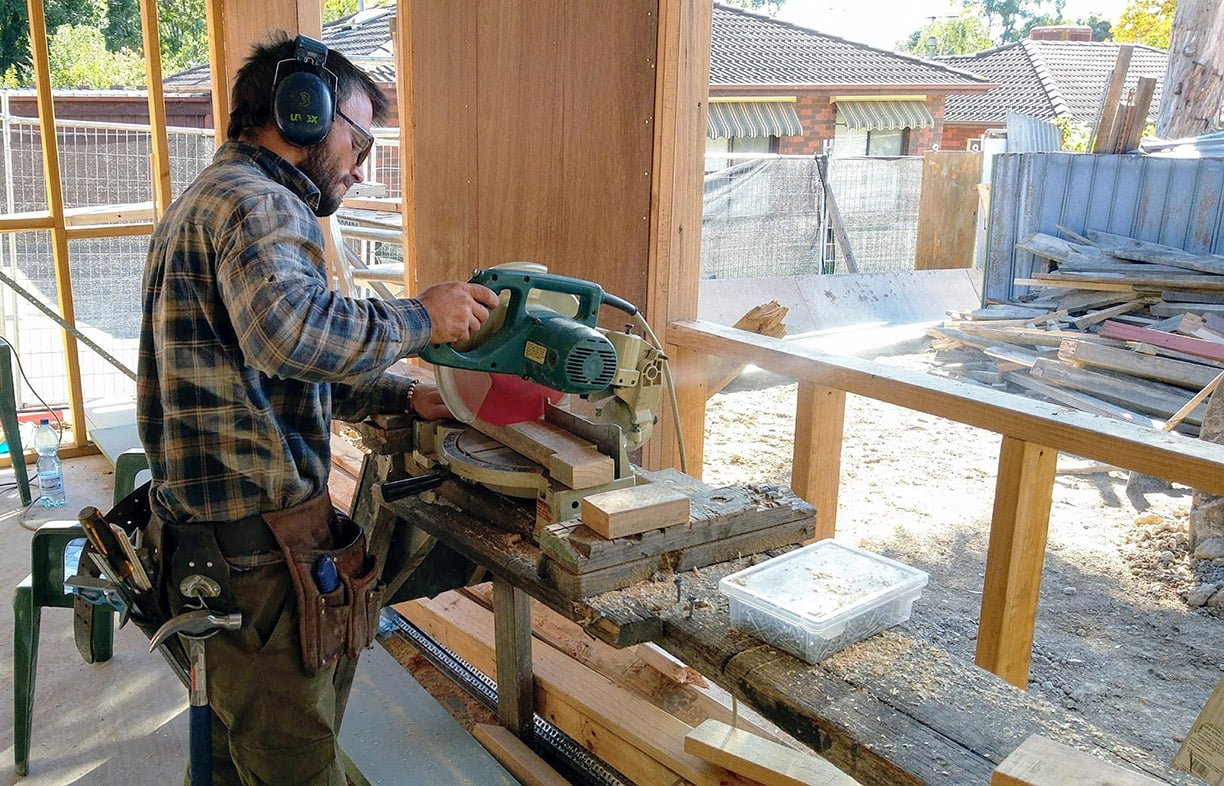
An overload capacity of 5175 W (or more correctly, VA, the AC version of watts) was expected to cope with the starting current—motors usually draw more than their rated power when starting, called the startup power. Inverters can often provide a lot more than rated power for a short period (this unit is rated at over 5000 W for five seconds), which is often all you need to overcome start-up surge when a machine starts up, so you can often size an inverter smaller than you might expect and still have adequate capacity.
So why not a larger capacity inverter that could meet the startup and continuous operating demands of the two biggest users simultaneously? We couldn’t afford to spend the money on a system which would then be oversized for its final use in the garden shed workshop.
Two Narada AGM-Polymer-Gel 200 Ah batteries were added to store excess solar power and fill the gap between panel production and site demand. Since none of the significant energy users operate continuously, the batteries would be replenished when power demand fell.
Electricity would be supplied to the site via a standard safety switch and circuit breaker connected to 230 V general purpose outlets (the technical name for the common 10 A power point).
Experiment launched
Thus, our builder David and solar installer Gary decided to go ahead with the solar-powered work area experiment. The idea was a perfect fit with the aim of building a more sustainable home. Plus there was still no firm date on a grid connection.
For the experiment, Gary took advantage of an existing carport and garage near the site of unit 1. Putting the panels on the north-facing carport roof and the inverter/batteries in the garage minimised the distance between worksite and power supply.
With a great deal of optimism, the experiment launched in January 2018.
A solar-powered worksite is possible
The short answer to the question, “Did it work?” is yes. An off-grid system proved to be a reliable power supply even during the short, cloudy days of a Melbourne winter.
Having declared the experiment a success, there are a couple of things to keep in mind. A solar-powered site makes everyone acutely aware of electricity availability.
David’s crew knew about the power supply constraints but the first few days were a learning experience. Firing up the drop saw when the air compressor was running did trip the safety switch. On a grid-connected site, using the two tools simultaneously isn’t an issue. For this site, everyone needed to be aware of what others were doing and organise the workflow so productivity wasn’t affected. This power demand management soon became a habit.
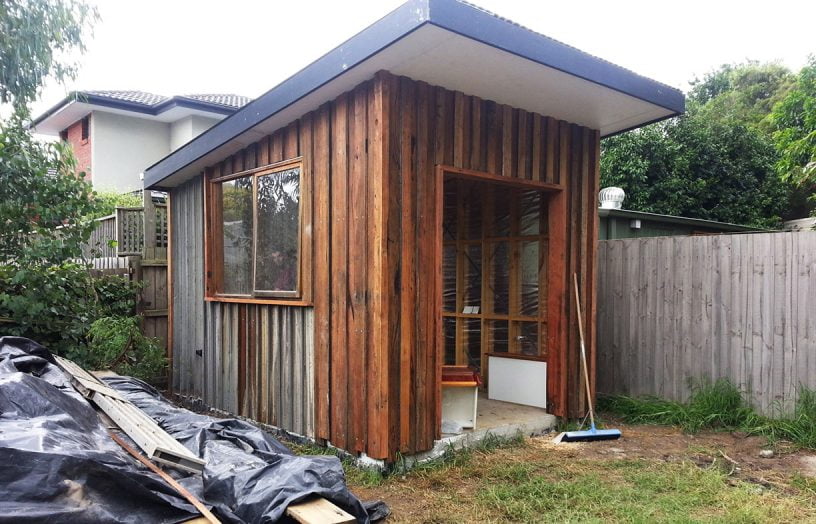

There was one day when a generator appeared on site, but this was due to extenuating circumstances. In the middle of winter, David booked a concrete polisher for two days to work on the slab. With its continuous high load, the polisher was expected to go close to the off-grid system limit. On the first day, cloudy weather prevented any significant battery recharging when the polisher wasn’t being used. Next day’s forecast was for more of the same weather. Would the limited sunlight recharge the batteries before the polisher started again? Would the polisher grind to a halt?
David couldn’t take the chance of the system not being up to the task. He hired a generator to avoid a potential delay in the construction schedule. The generator provided electricity when the off-grid system couldn’t meet demand on this one day. It’s unlikely this would be an issue at other times of the year when days are longer and less cloudy.
The experiment goes on
Given the success of building unit 1 with solar power, there was no question about continuing with the same approach for units 2 and 3. Even though the grid connection has now been completed, using solar power eliminates the need to pay for a temporary power supply.
When the garage and carport were dismantled to make way for unit 2 construction, the off-grid system was simply relocated to the garden shed. After construction finishes, it will be perfect for meeting the electrical demands of a small workshop and rainwater tank pumps.
We encourage others to consider this idea for house construction. Don’t assume that an electricity grid connection is essential. One way to ensure a sustainable home is built in a more sustainable manner is to take advantage of the sunlight shining onto the worksite.
Howard and Libby’s house will be opening for Sustainable House Day on 15 September. You can visit it by registering here.
Further reading
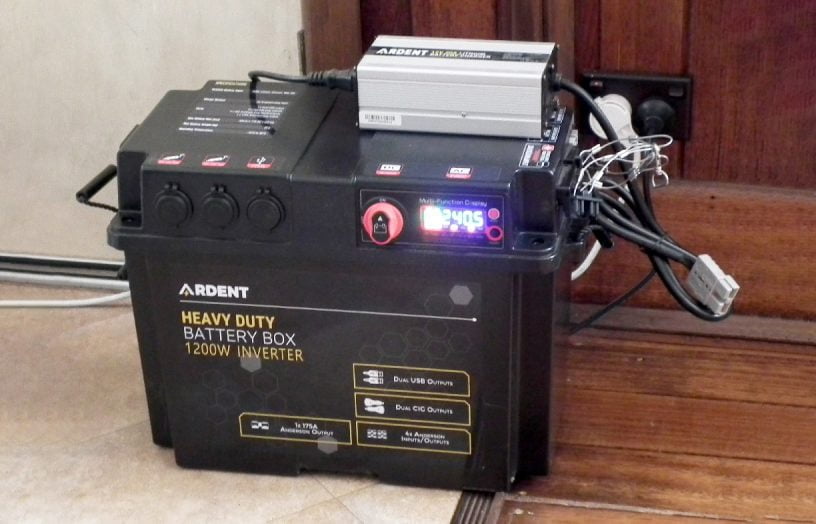 DIY
DIY
Deleting the genset
If you have the need for the occasional use of a generator, then why not replace it with a much cleaner battery backup system instead? Lance Turner explains how.
Read more Renewable grid
Renewable grid
Is a floating solar boom about to begin?
Rob McCann investigates the world of floating solar energy systems.
Read more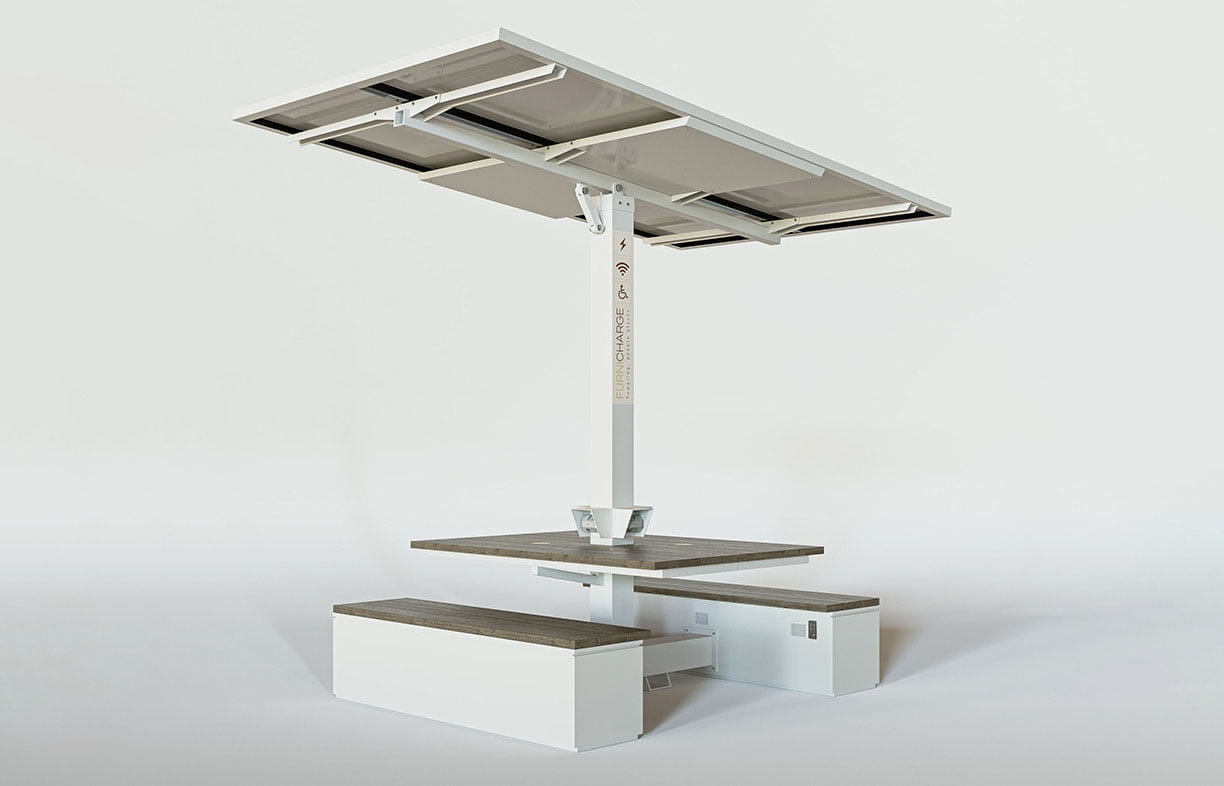 Products
Products
Product profile: Portable solar recharge hubs
Providing device recharging for events or outdoor areas with no access to electricity can be difficult, but the Furnicharge Freedom Hub makes it simple.
Read more

